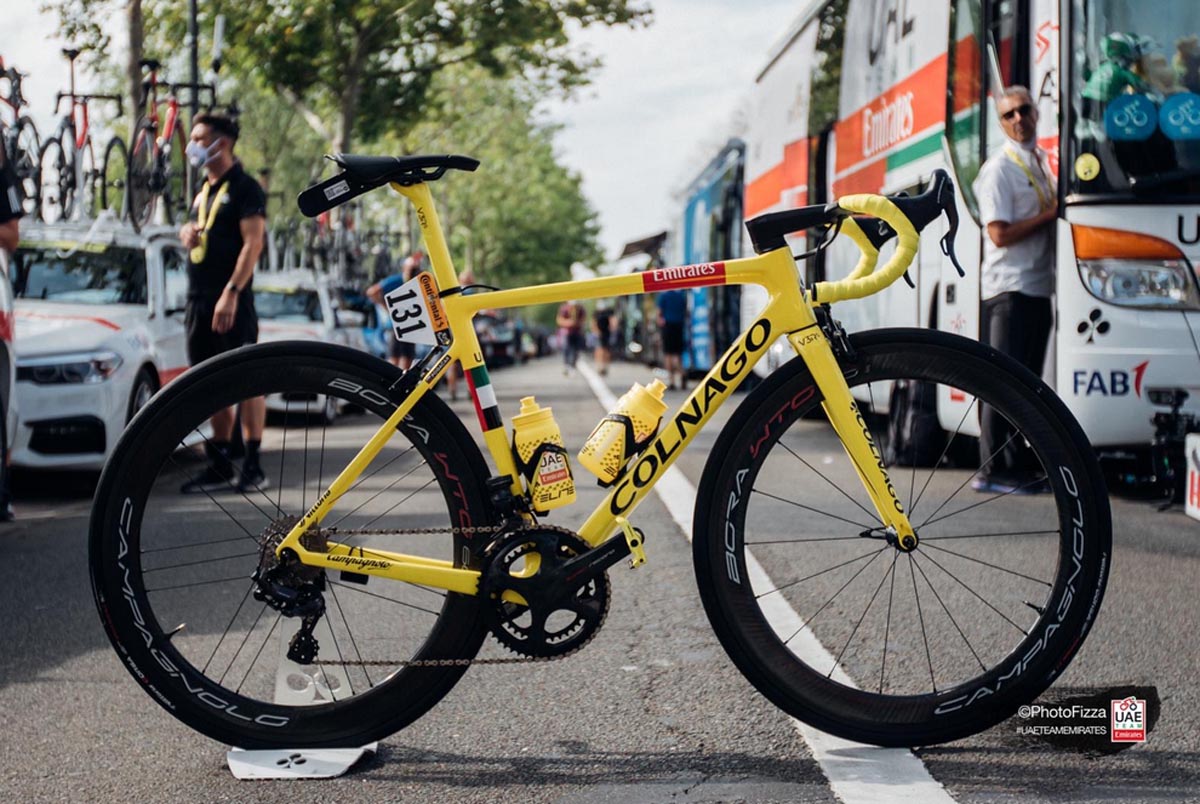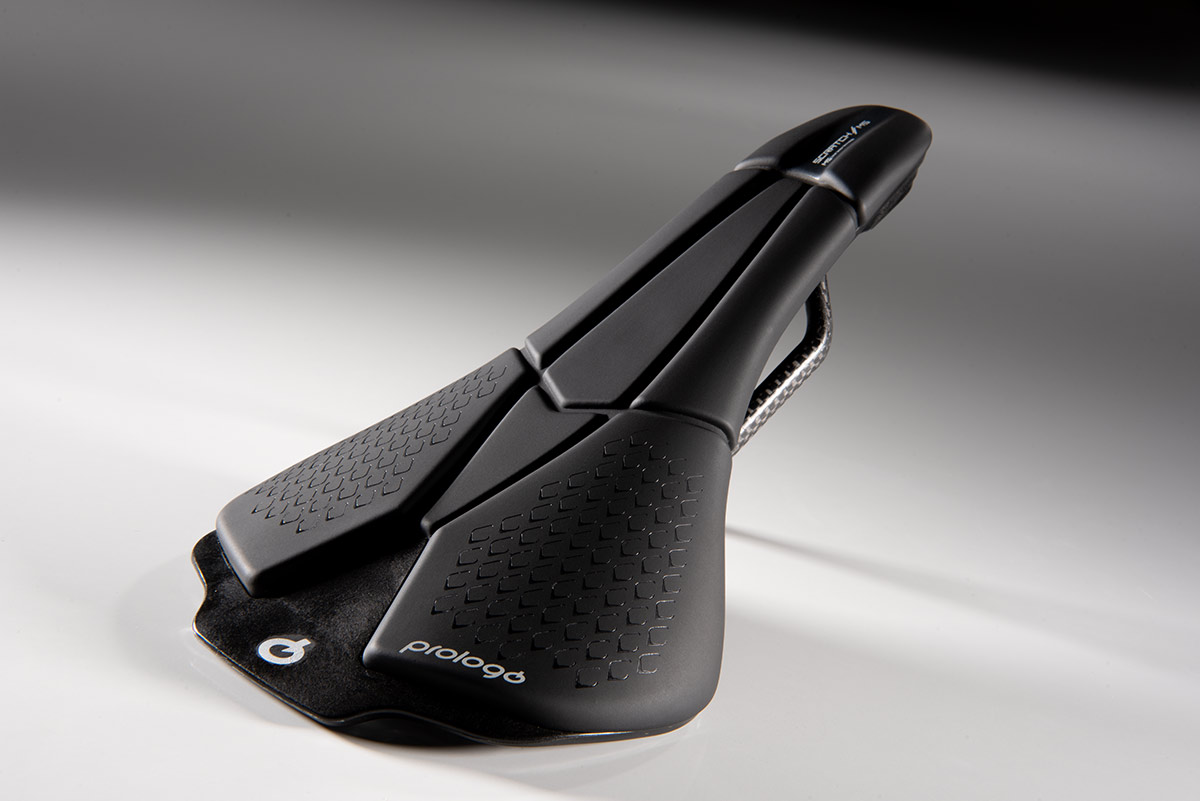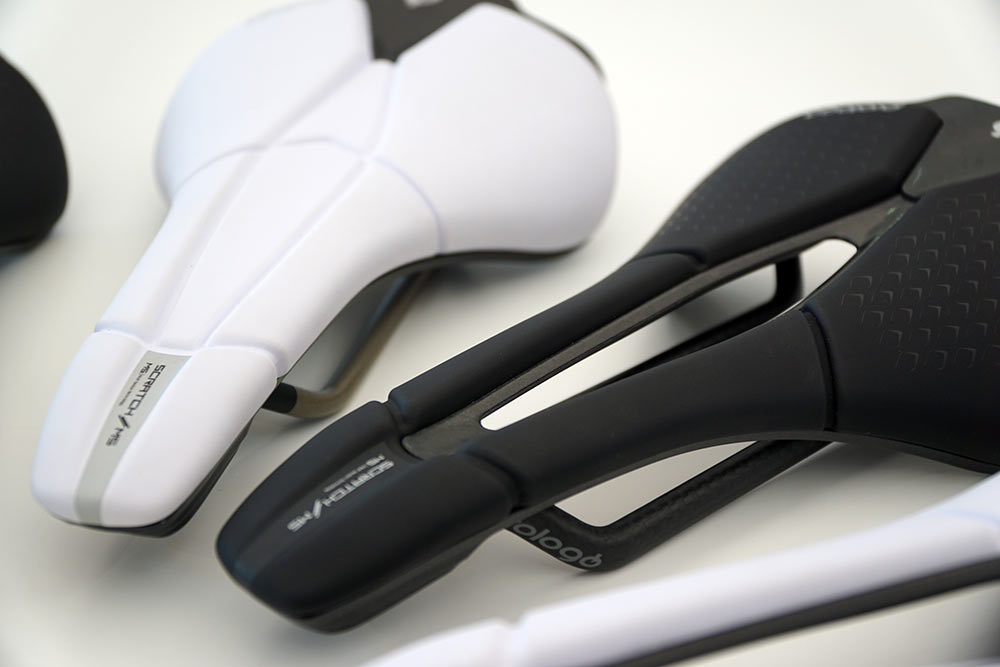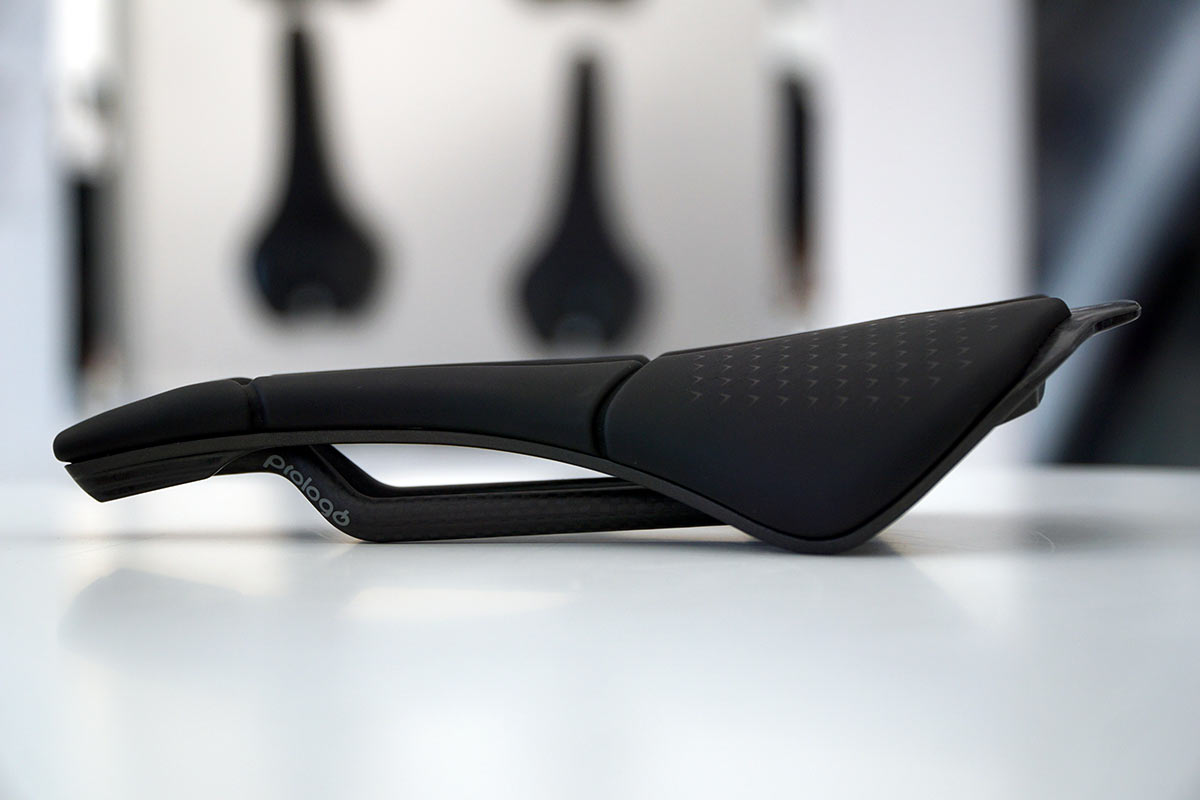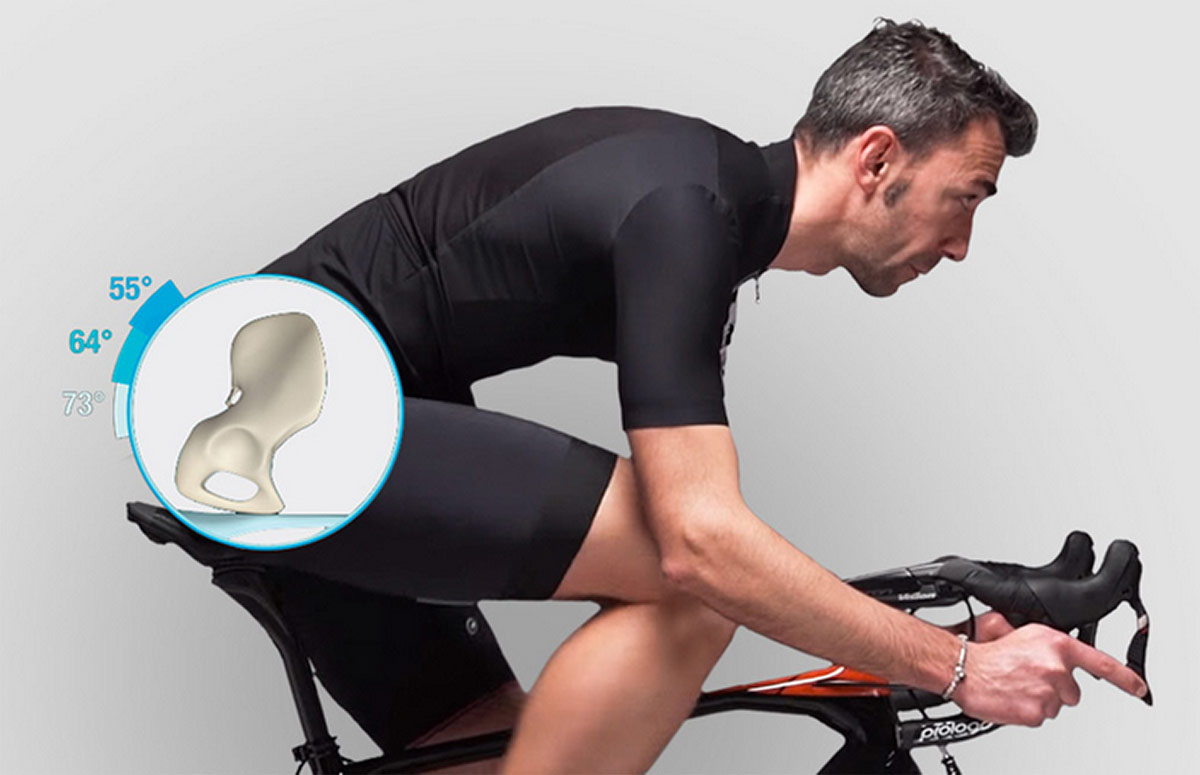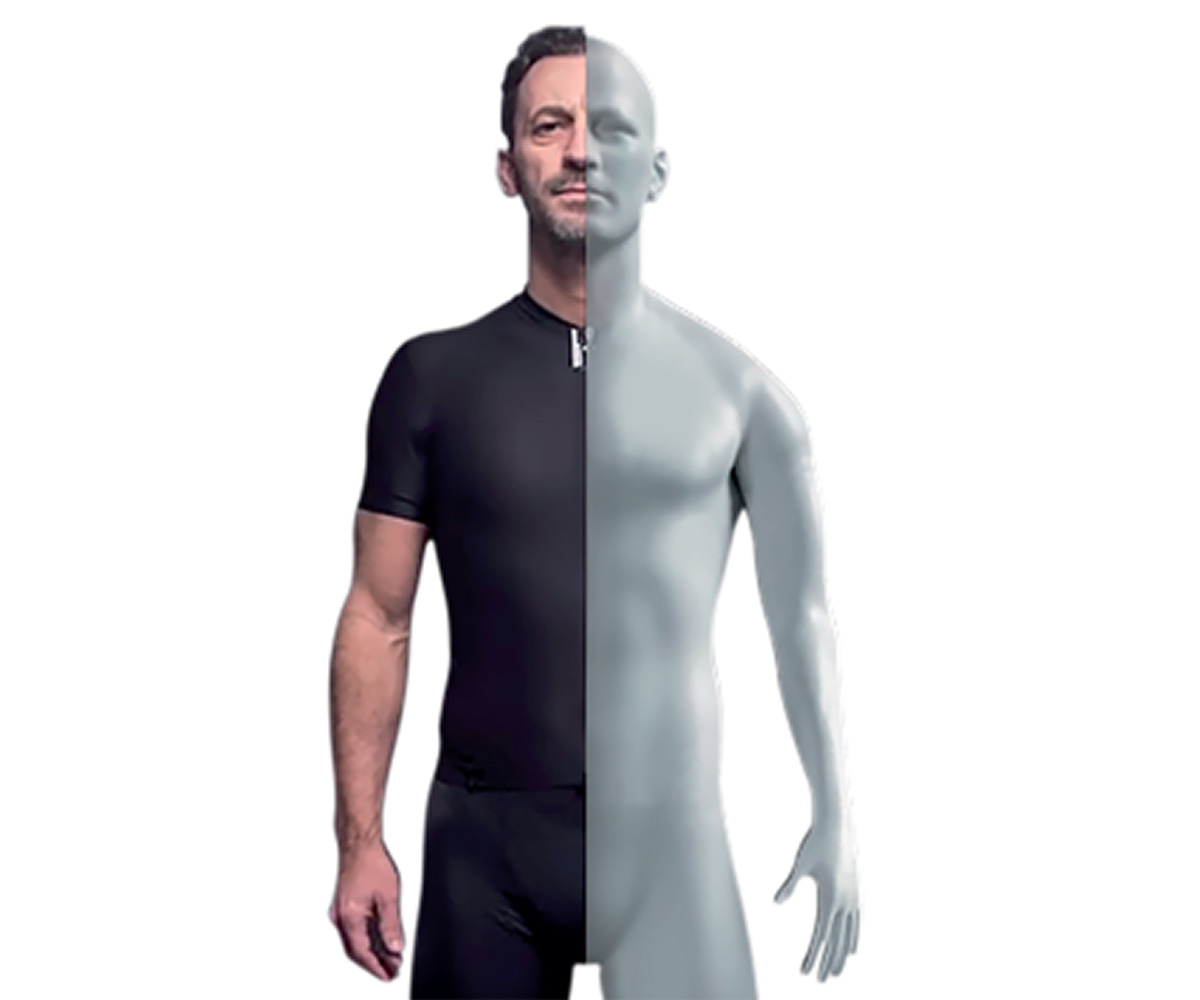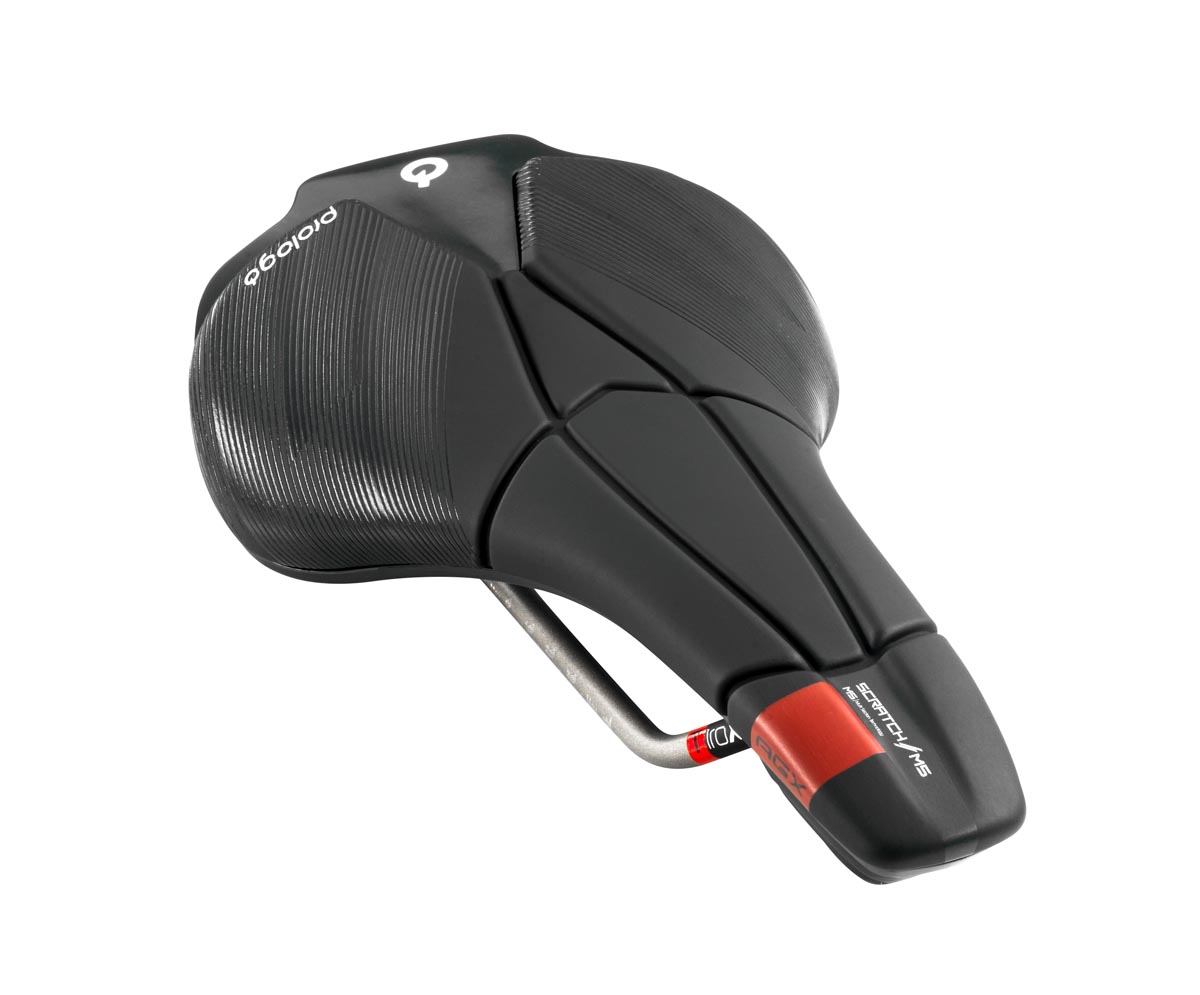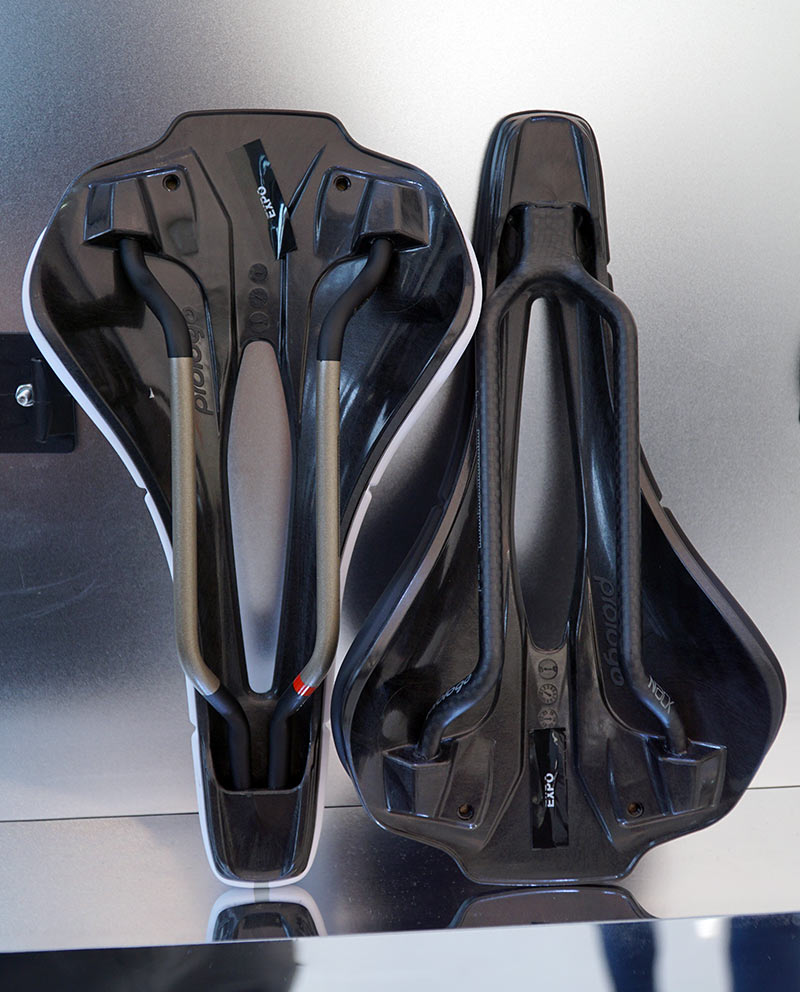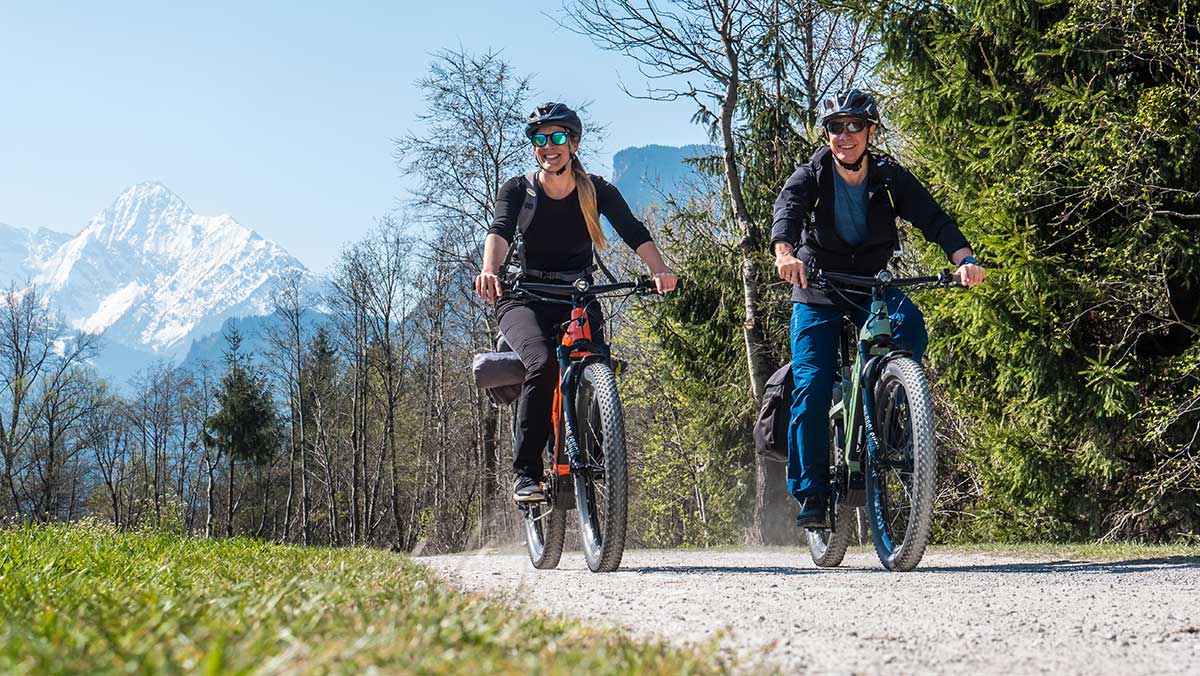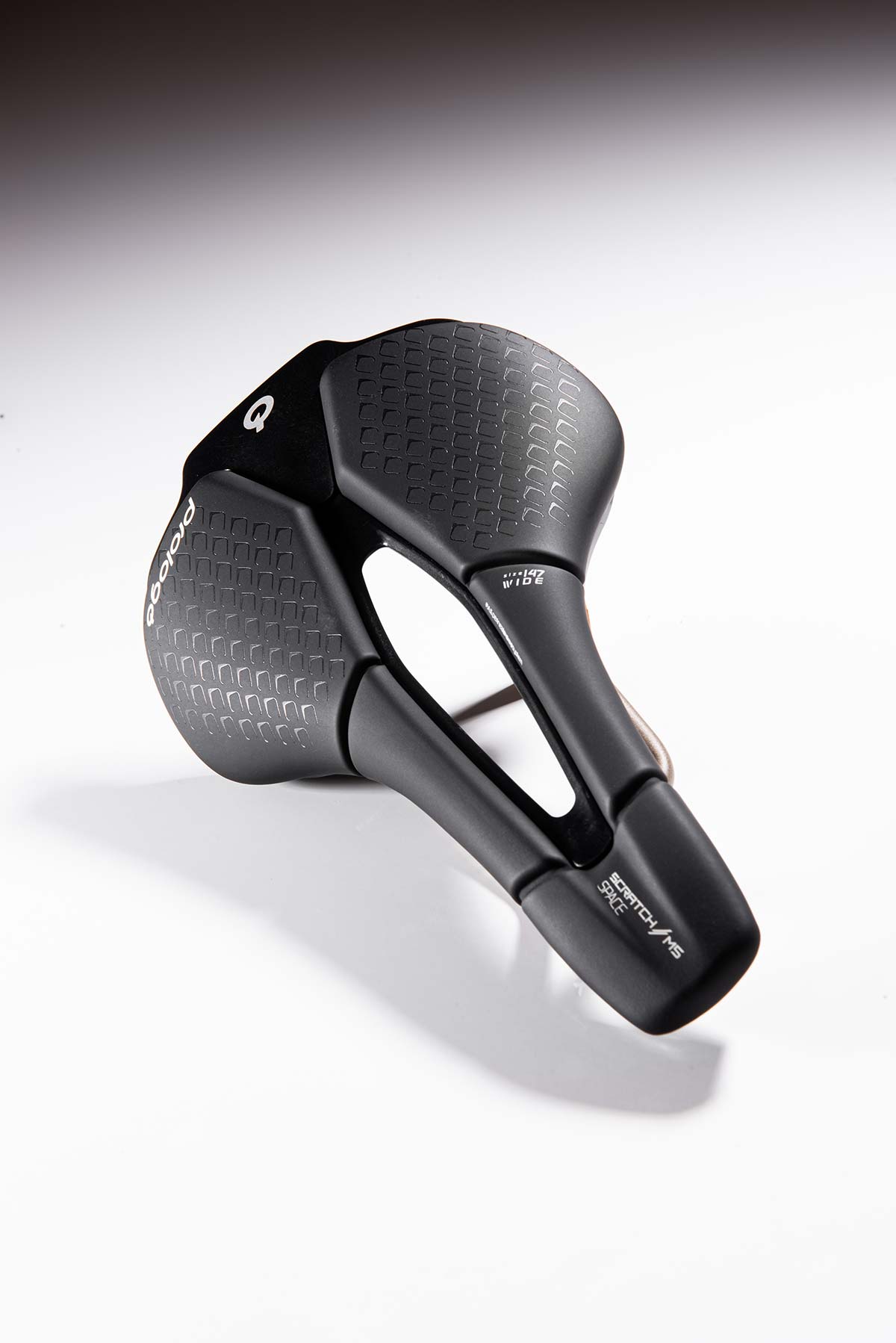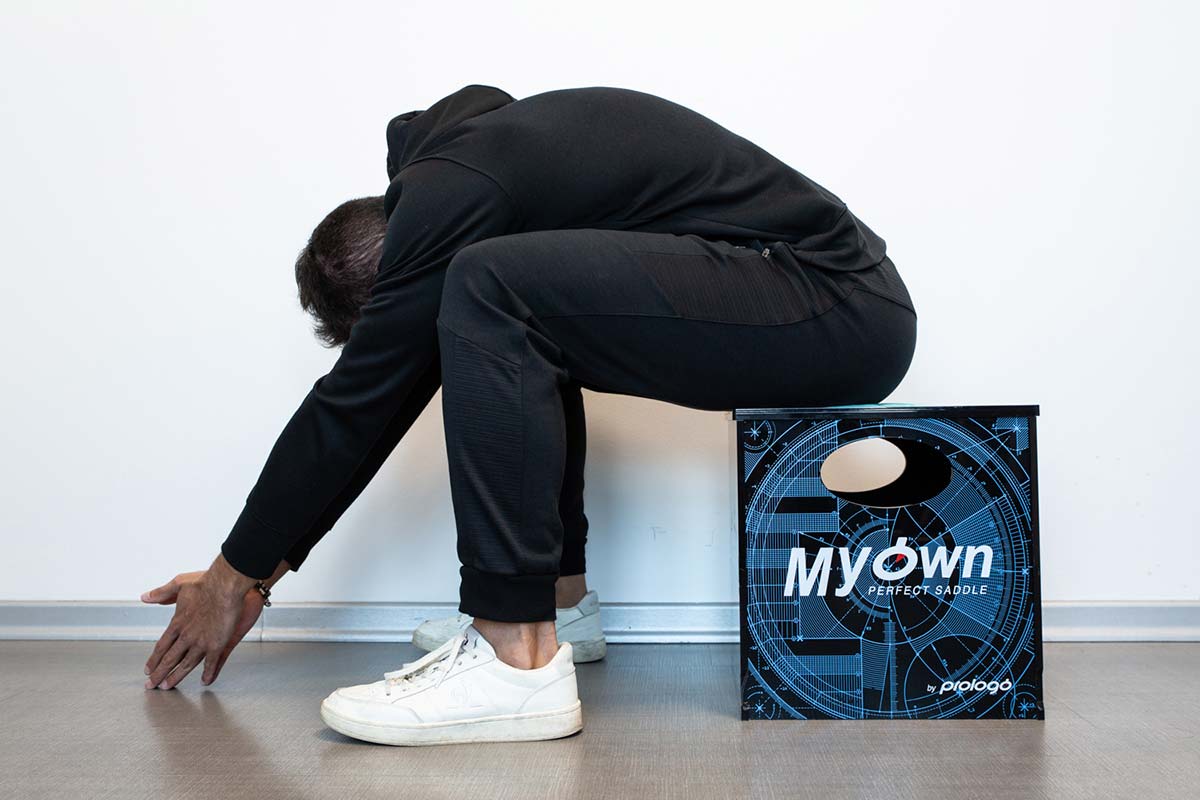We know, there’s no such thing as a stupid question. But there are some questions you might not want to ask your local shop or riding buddies. AASQ is our weekly series where we get to the bottom of your questions – serious or otherwise. This time Prologo give us advice on how to choose the right saddle! Hit the link at the bottom of the post to submit your own question.
Prologo’s MyOwn fit system asks riders for four key pieces of information to help them choose the right saddle:
- Riding discipline
- Ischial bone width
- Hip Flexibility
- BMI
You’ll be well-familiar with the first two of course, and likely have a good understanding of why these factors are relevant. However, the reasons for factoring hip flexibility and BMI into the equation are less obvious. Understandably, you guys had some questions in relation to this… Prologo have the answers right here.
Prologo help you choose the right saddle
Why do you want customers to measure their back flexibility for choosing the right saddle? I understand that it affects the range of tilt of the hips and therefore sit bones. However, wouldn’t it better to know what the rider’s height and leg length are in relation to the intended bicycle’s reach measurement? This would provide you with a better idea of what position the rider will be in most of the time, rather than the range of positions they can physically ride in.
Prologo: For sure, knowing what the rider’s anatomical measurements are in relation to the bike’s dimensions is very useful. We strongly suggest taking these into account when you buy a new bike or saddle, but only after you’ve had your back flexibility measured. This is for three reasons:
- Taking a measure of back flexibility is easier than defining the rider-bike specifications. It can be done easily in a shop without any tools. We only use a “digital level” that we place under the last vertebra while the athlete rotates to his or her maximum. You don’t need anything professional or specific knowledge to do this.
- If you change the bike or saddle you already have info that you can use.
- Back flexibility is very important and it also relates to the other steps we consider in finding the right saddle. If you set your measurement on the bike while remaining still, or on a trainer, you maintain this position for a restricted amount of time. So, the reach and muscle extension can be different from the one you’ll have during a 3–6-hour ride. It is always good to know the absolute maximum value and then use it in a particular situation.
Once you’ve found your saddle you should go to a fitter to find the right position. There it is essential to know the relationship between the rider’s morphology and the bike’s measurements.
Especially on road and gravel bikes, I tend to move around a lot front-to-back on a saddle depending on whether i’m climbing or descending. What type of saddle should I look for?
Prologo: First of all, you should understand why you move around so much. Do you slip or is this your style? If the answer is the former, we suggest you go to a bike fitter and find the right inclination and setback (we’ll have a tutorial on those, stay tuned!).
Another reason could be that your hip width is not ideal for your saddle. Maybe your hip is too narrow and so you can’t benefit from the shape. You should have it measured with the MyOwn fitting system.
If this is your riding style than we suggest the following: a saddle with our MSS (Multi Sector System) that can adapt to the different positions, and the CPC technology: 3D polymers that offer more grip and help you to find the right position while moving. You’ll find all these features in the “Scratch M5 CPC”.
I understand that more expensive carbon & carbon-railed saddles are lighter than ti or steel rails, but is there a performance benefit from the stiffer structure of carbon saddles? Does stiffer carbon also mean less comfortable, or less able to absorb road/trail vibrations?
Prologo: The carbon-railed saddles are higher performing for two main reasons:
- The first, as you correctly said, is the weight. Less weight means more power at the same effort.
- The second is that the stiffer carbon structure delivers greater pedaling efficiency. The stiffness allows power to be transmitted more directly, so there is less energy dispersion. Take a front or full suspension mountain bike for example: the stiffer the suspension the more the power you can lay down.
This also means that a saddle with this structure has less shock absorption capacity. It is less comfortable only if you use it in environments and disciplines that aren’t aligned with its intended use. If you’re looking for performance and speed then this structure is useful. If you have a more touring-style or you ride trails or gravel than it is better to choose an alloy rail to absorb the vibrations.
How long/how many years is it safe to ride a saddle with a carbon structure or rails? Does the material fatigue over time? Does it matter what material it is made out of? I remember that years ago I had ridden a saddle with ti rails for more than 10 years, but the foam inside seemed to break down making it less supportive. Is that still a concern these days?
Prologo: Every material has a life span, and this is influenced by external factors such as: the rider’s BMI, how you use it, the solicitations and the product care. Everything has an “elastic coefficient”. This refers to how much something is able to restore its shape after a solicitation.
After some time, its elastic coefficient gets worse. For sure the quality of the components is fundamental. A better quality means a greater life span (if the saddle is used and assembled properly).
For example, a rail that has a high amount of carbon fiber is more resistant. The same is true for those made with good quality titanium. A high density foam will begin to collapse later than a low density foam. Today, the new and innovative technologies guarantee better durability.
The only factor that you may consider is the cushioning. More cushioning means more foam and an undesirable pressure distribution, creating hot spots that, in a long-term scenario, modify the structure.
Hi Prologo guys! I now ride a lot more than I have done in the last several years. Even with the best bibs I still get saddle sores due to chafing. I had my sit bones measured, so I am pretty sure of the saddle width I need. Now, I have a love/hate relationship with my ex-beloved flat Zero II. saddle, depending on the length of the ride. Could a switch to a more rounded saddle help? I don’t really understand how the shape of the saddle interacts with the pressure points.
Prologo: Hi there! Let’s start with the saddle shape: it is designed to follow your morphology, especially your hip flexibility. The more flexible you are the more a flat-shape saddle is suitable as you’re perfectly able to reach the handlebar without any problems.
Reduced hip flexibility requires a more rounded shape to compensate for the lack of roaming, helping you to reach a good position. Then, like everything, it depends on your bike and style. If you have a relaxed style and a non-aggressive position then you don’t need to rotate too much. But, if you have a very aero position and, therefore, a considerable saddle–handlebar height difference, then you need to be more flexible. The right shape saddle can help you here.
So, as you can see, shape relates to other elements to help the rider reach the right position. Our fitting system “My Own” calculates all these elements for you and tells you what type of saddle is right for you.
Onto your next question: how does the shape interact with the pressure points? When you rotate your hips, you put more weight on the front of the perineal area. This can lead to soft tissue pain and numbness. That’s why it could be useful to have a cut-out to discharge the pressure.
Speaking about your individual problem… it depends on where you feel the discomfort. We suggest three possible scenarios:
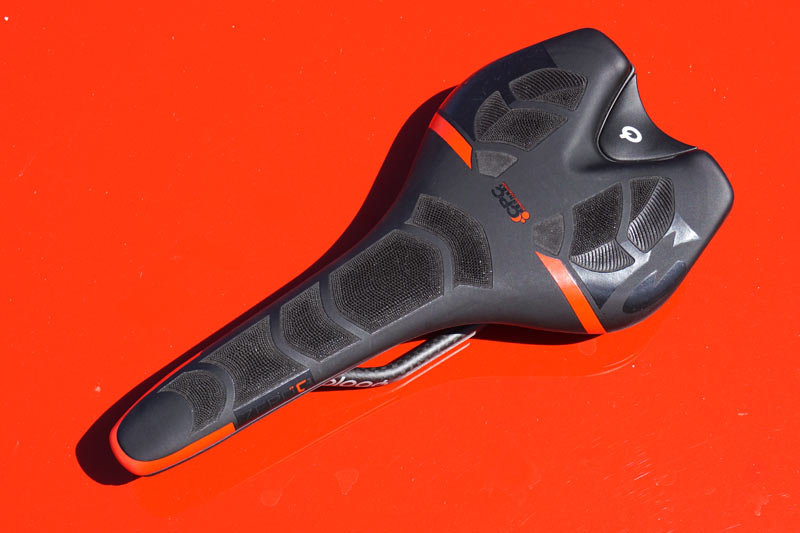
- The shape and the width are good, but the saddle position on the bike is not ideal. Maybe the setback is too much or too little forward or the inclination is not calibrated to your style. That doesn’t let your saddle express its potential, because the support is not where it should be.
- Your position is not so aggressive. In this case the presence of the cut-out diminishes the surface and so this means more pressure near the cut-out borders.
- On the contrary, your rotation is great and you need a cut-out to discharge the pressure on the front area.
Our suggestion is this: if you have carefully chosen your saddle with a fitting system, then try a bike fitting session to understand if it is a position issue. Hope this helps you!
I switched to a softer saddle for indoor training but now I’m finding that instead of hot spots, I’m experiencing cold spots, especially at the area of my sit bones (specifically the left). I do have leg length/pelvic discrepancies but I have shims in the left shoe. Any advice?
Prologo: A softer saddle is not always a comfortable saddle. Especially if you are an “experienced” rider that is used to staying on the bike. The right density is crucial to avoid undesirable pressure discharge.
A saddle with the right consistency helps better distribute the weight, but why is that? Because a saddle that is too soft sags under the rider’s weight, creating “hot spots”.
A harder saddle maintains the same support surface every time instead. This is particularly related to the BMI, the body mass index.
BMI is the ratio of weight to the square root of height. It is normally used as an indicator of an athlete’s health. However, this is an important reference point that also indicates the pressure value that is exerted on the saddle. The higher the BMI value is, the greater the pressure will be.
So, the user will choose a wider and/or more padded saddle to obtain better load distribution. So, as you can see, the softness depends on the rider’s height and weight. Our MyOwn fitting system determines this value for you, helping you to find the right density.
We suggest you try our Multi-Sector System technology. It is designed to have 5 different “islands” on the saddle that have different densities and work autonomously, so they can adapt to the rider’s style and morphology.
Regarding your specific case there are two possible options:
- A softer saddle does not discharge pressure very well and does not provide ideal support leading to numbness and reduced blood flow (cold spots).
- Because you switched from one saddle to another, you may need to re-calibrate your position on the bike, especially if the measurements are different.
Stay in touch, we’ll have a video tutorial on how to choose the saddle based on your BMI soon.
I currently have an Ergon SM Enduro saddle on my XC bike. After very long rides, I notice that my coccyx region gets a bit sore. What do you think the reason for this is? Is it a problem with the tilt angle, or the amount of padding? I don’t really know where to start.
Prologo: Due to the fact that the coccyx region is in a very backward position, we believe that there are three possible reasons for that:

- Your saddle is quite flat, but maybe your hip flexibility is not ideal for that shape and this leads to the wrong kind of support that, after a long ride, leads to some pain. You may want to measure your flexibility to see if your hip rotation is good enough to get the benefits from a flat saddle. If this is not the case, a more rounded shape is better.
- Maybe the inclination is not ideal. If the nose is tilted too much upwards pressure is placed onto the back area, and so onto the coccyx.
- In general, it can be that the position on the bike is not right, and so the support is also not correct.
We suggest you try our MyOwn fitting system and then go to a fitter to check the setback and inclination. We’ll have a tutorial on that!
Why do the Prologo Scratch saddles have a segmented design? Seems to me the gaps just provide edges for potential friction spots. Do they offer any benefit or are they simply there for aesthetic purposes?
Prologo: The Scratch Family (M5, M5 space and with our technology CPC) is an ergonomic line that blinks its eye to the performance. The segmented design is useful to offer more grip and to help riders find the right position on the saddle after a movement.
This design doesn’t impact pressure, because the gaps are too reduced in height, but the fact that they are distributed on the entire surface helps to maintain the grip. And, why not, it looks good as well!
Are you guys looking at developing a saddle that rocks side-to-side and fore aft with the rider’s input? I think it could be of ergonomic benefit – especially on a turbo trainer where the bike is static.
Prologo: This is an interesting idea. The fact that a saddle follows the rider’s movement is for sure something to think about. We must be careful though when we consider a saddle that moves, because staying still in the right position is something very important.
If we start to compensate for the little movements, and we do that for 5-6 hours, then our muscles can be very tired. This new version needs to offer only the right movements and at the right time. Stay in touch and maybe we can come up with something on this new idea!
We did something similar with our MSS (Multi-Sector System), a technology that creates five different zones on the saddle. Everyone has a different foam and density, so they work autonomously to adapt to the rider’s style.
Would you recommend a different saddle for trainer use than you would for a rider out on the road?
Prologo: We have a rule: if you stay comfortable on your saddle, then it is the right one for you. For example with our pro athletes, once they have chosen their favorite model, they stick to it.
This means that if you like your saddle you can also use it on the trainer. Your experience is the most important factor to consider.
The difference between a trainer and a road ride is that in the first case you remain in the same position without moving. On the road you switch from one position to another more frequently. On the trainer you are more likely to stay still, so the same points of your anatomy receive pressure all ride long.
So, in case you need another saddle, the important thing is to find one that keeps you still and discharges the pressure in a good way. You have to consider the “classic” four steps that we suggest when choosing a saddle (see them here) but it is important to also consider the fact that the movements are reduced.
How do the Prologo men’s and women’s road saddles differ in shape and padding and why?
Prologo: Our saddles were born to be unisex because while male and female anatomies are certainly different from one another, these variations impact the way you ride less than you might think.
Today’s technology allows for creating systems that adapt to the anatomy and style of the cyclist. For many years studies and products were directed only toward a male audience. After that, women’s-specific products were born. Now, Prologo proposes unisex solutions capable of satisfying the different anatomical conformations.
The first thing you think about when talking about a women’s saddle is the width of the pelvis. Female anatomy, in general, displays a greater distance between the ischial bones in relation to the volume of the pelvis. But, since the latter is on average less voluminous than a man’s pelvis, the absolute width remains very similar.
One important difference is the natural rotation: the female hip bone is more rotated (women are also generally more elastic than men). A marked rotation can orient towards the choice of flat or semi-round saddles and to a product with the cut out: a more rotated position means more pressure on the perineal area.
The most important difference refers to the genital area: a women’s anatomy makes her more vulnerable to experiencing high pressure, numbness and pain. This aspect brings women, according to their riding style, towards the choice of an open saddle.
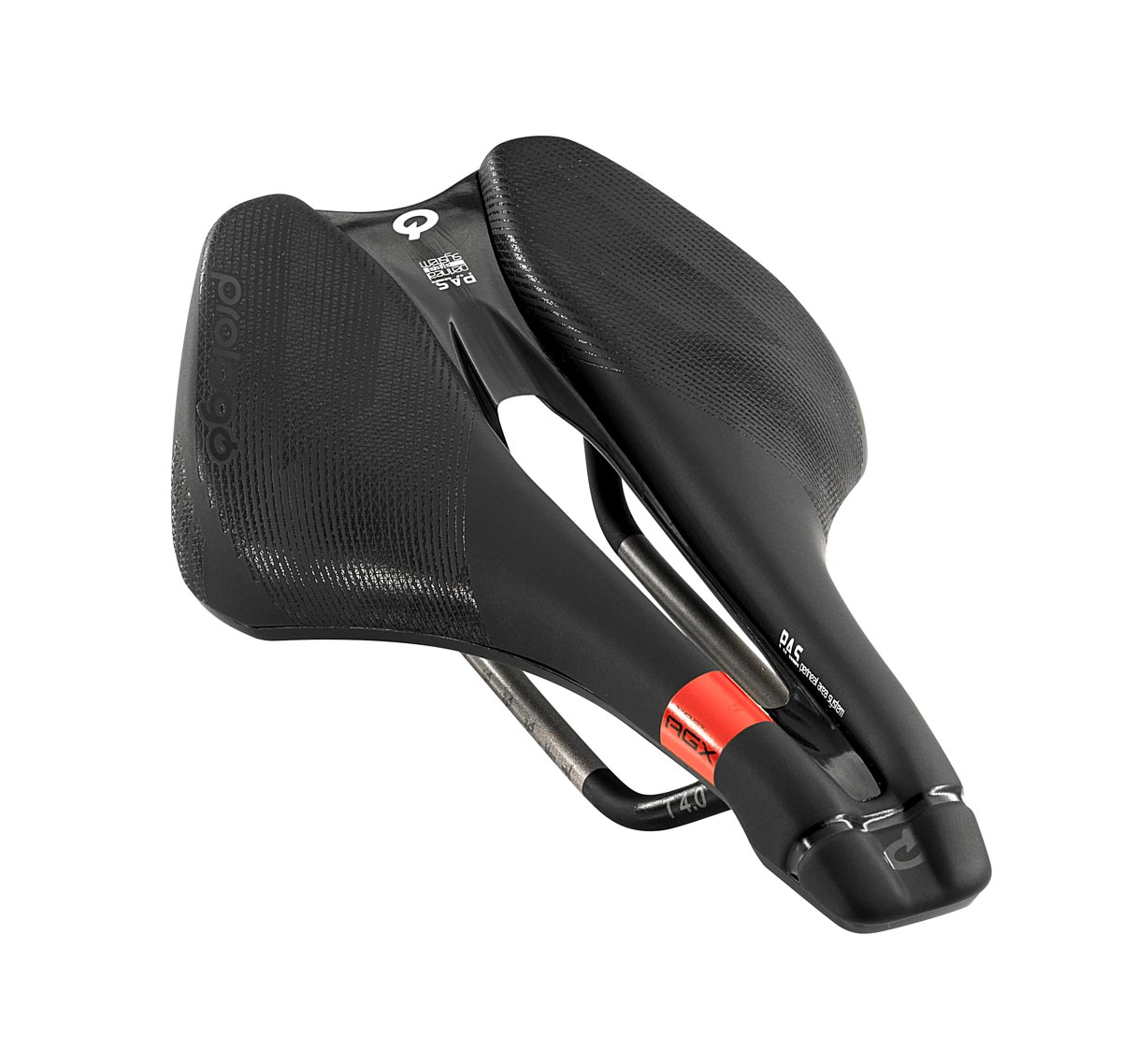
In conclusion, the choice of the saddle, for men or women, is certainly conditioned by anatomical factors, but less than we are led to think. The main differences lie in the rotation of the pelvis and the conformation of the genitals; these elements, compared with other stable factors, can direct women towards the choice of an open saddle. Other differences are minimal variations related to men’s data.
Prologo’s products, with their technologies, shapes and ergonomic design, are the ideal unisex solution, presenting versions with cut-outs and without. These two designs are capable of being adapted to suit every single type of cyclist. It remains essential to evaluate factors such as riding style, bike geometry and the final use the saddle is put to. These parameters can be explored and analyzed with the MyOwn fitting system.
For riders than need more width (with a large hip bone) and more padding, we also have the “space version” of some of our bestsellers, guaranteeing more comfort when needed.
My gravel & mountain bike saddles often end up scuffed on the sides from occasionally laying the bike down or even crashing. Why doesn’t Prologo reinforce these sides of the saddle since they are the first to touch the ground like the end of your bike’s grips/handlebar?
Prologo: That’s a really common problem. Actually, we provide side-protection to our off-road saddles. You will see it on the Dimension NDR, or Scratch X8 and Nago X10. This is a detail that it is very useful and makes a big difference from a long-term point of view.
Every discipline has specific saddle features; some XC saddles are without it to keep weight low, while others provide the protection to help you ride with your favorite saddle for a long time.
Will we ever see custom-fit saddles from Prologo? It seems like that would be the future of providing the best fit for individual riders?
Prologo: For sure, this is the future. We strongly believe that everyone is unique in his or her morphology and riding style. Only knowing these features can lead to the perfect saddle.
Our MyOwn fitting system is the first step toward knowing more about the athlete, for example his or her hip flexibility, hip width and BMI. Then, based on this data, we give direction toward the saddle features that may be more useful for the rider.
In the future we may see something more personal, but always starting from a common point to modify some little details, the ones that make the difference.
Do bicycle saddle designers develop triathlon saddles for the over 70 population? We do have different anatomical shapes than the 20-50 year old population.
Prologo: We’re safe to say that our saddle range covers options for everyone. Knowing the rider’s features can help us to choose the best saddle for them, no matter their age. We completely agree that your anatomical shape changes over time, but as soon as you have some data about them, then you can choose the one the suits you best.
How you can know more about these important features: using the MyOwn fitting system at authorized dealers (see the map here). You can repeat the test every two years to follow your anatomical changes, seeing if your saddle still works for you.
For example, you can switch from a flat to a round one, helping deliver the right hip curvature, or to one with more cushioning. As we’d like to say: the right saddle is the one with the right mix of features for you, no matter your age or weight.
Why does my BMI matter when choosing a saddle? I’m a little on the plus size… with a BMI of 28. Do I need more or less padding on my road bike saddle than a rider with a “healthy” BMI or someone who is a little underweight?
Prologo: Not all cyclists are the same. The professionals we see racing in international competitions have a weight and body composition that can rarely be found in amateurs. Pros, in fact, follow nutritional and training schedules defined by experts and doctors that lead them to have a well-defined race weight. Their BMI is constantly monitored and based on their needs.
Knowing a rider’s weight allows you to predict the pressure value that will be exerted on a saddle. In fact, knowing the height as well as the weight, is useful in understanding the distribution of those forces. For example, a rider of 80kg and 170cm tall will distribute the load differently to an athlete of the same weight but with a different height.
The average rule is that the more BMI increases, the more useful it is to have a wider saddle that allows for better pressure distribution. It is wrong to think that more weight means having more padding on the seating area: this is a subjective value that depends on the rider’s experience and his or her subjective tastes.
Ergonomic saddles are able to adapt and respond to different BMI values. For users who are looking for maximum comfort and resistance, the “Space” versions, wider and more padded, are the perfect product.
Take a look to the Scratch M5 Space (+10 mm width and more cushioned) or the Dimension Space.
How do I choose a saddle shape (round, semi round, flat) from home?
Prologo: We recommend having it measured with our MyOwn fit system. This is also because the shape isn’t the only factor you should consider, they all work together. If you can’t do it, then we suggest three different options:
- Determine how flexible your hip is. Try to sit still and then rotate to the maximum. Challenge your friends and see how much you rotate. The more flexible you are, the more likely it is that a flat shape will suit your needs as you don’t need any help in reaching the handlebar. On the contrary, a rider with comparatively reduced flexibility needs a semi round or a round saddle to obtain the right position. For sure, this is an empirical way of doing it. During a fitting test we use a digital level positioned in the right spot.
- Consider your average riding distance. If you do long distance with a “relaxed style” then a semi round or round saddle is suggested, because it puts you in a more comfortable position. If you have a need for speed and power then you may consider a flat shape, especially if you ride track, TT or triathlon.
- Consider your past experiences. If after a ride you feel pain in your lower back it is probably because your saddle is too flat and your muscles stretch too much to the handlebar (if your position on the bike is right).
Got a question of your own? Click here to use the AASQ form to submit questions on any cycling-related topic of your choice, and we’ll get the experts to answer them for you!

